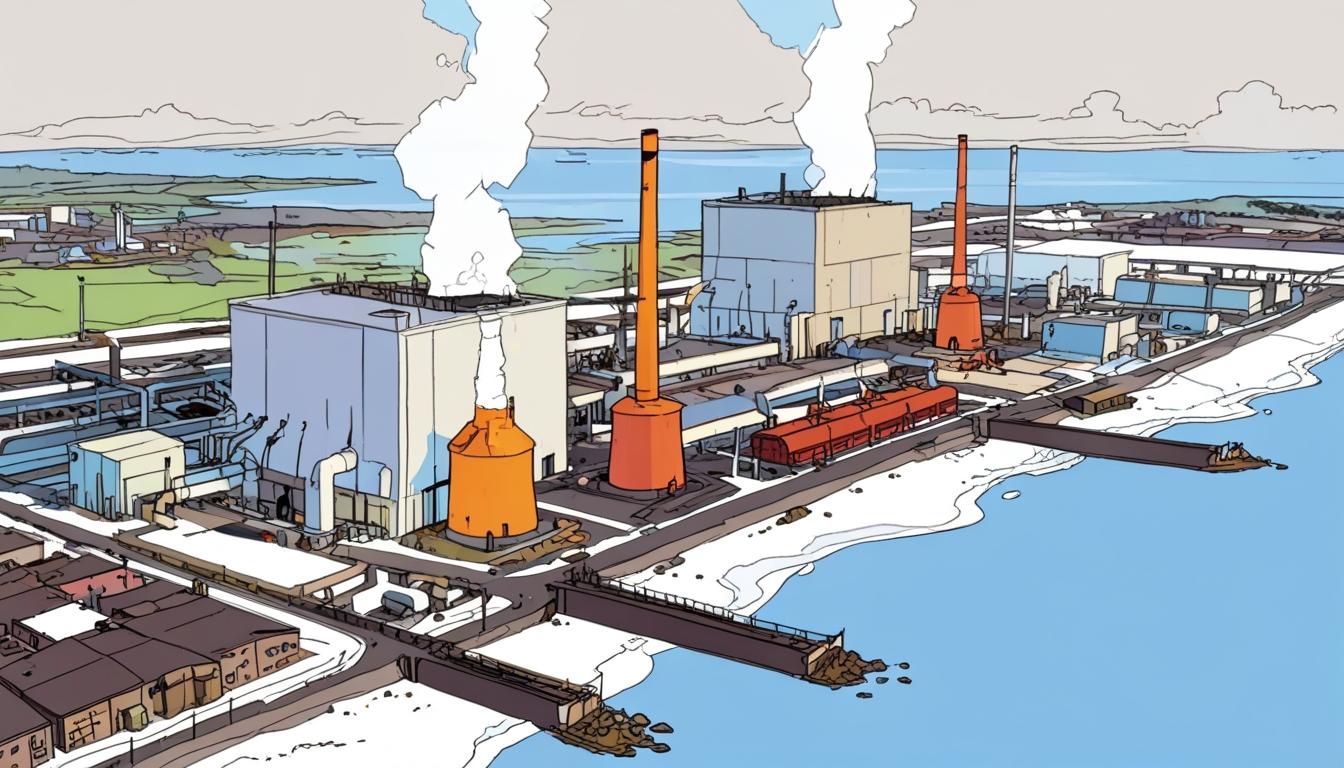Australia’s position as the sixth-largest aluminium producer faces uncertainty due to a proposed shift towards nuclear power, which could threaten three smelters and thousands of jobs. The debate highlights tensions between the Coalition’s nuclear plans and Labor’s renewable energy policies.
Australia’s status as the world’s sixth-largest aluminium producer faces significant challenges amid plans to shift towards nuclear energy, according to a recent report. This change in energy policy threatens the viability of three of the country’s four aluminium smelters, potentially leading to severe closures and putting thousands of jobs at risk.
The study, released on Tuesday by Renew Australia for All—a coalition of over 70 organisations—analysed modelling carried out by Frontier Economics, commissioned by the federal opposition. The opposition has proposed the development of seven nuclear power plants across five states if it assumes government control, claiming this approach could reduce energy costs by 44 per cent compared to Labor’s current renewable energy strategy.
However, an independent assessment of this modelling by Springmount Advisory revealed that it assumes industrial energy consumption would decrease by 15 per cent by 2028 and 50 per cent by 2035. Such reductions, the report warns, would leave insufficient electricity to sustain aluminium smelting operations at current levels.
Australia’s aluminium production is concentrated in four facilities located in Tomago (New South Wales), Gladstone (Queensland), Portland (Victoria), and Bell Bay (Tasmania). While the Tasmanian smelter depends on hydro-electric power, the other three rely predominantly on coal-fired electricity. Notably, the power supply contracts for the Queensland and New South Wales smelters are due to expire in 2029 and 2028, respectively, creating a potential gap before nuclear energy could be operational. This interlude might extend over several years, heightening the risk to these smelters.
Additional insights from the CSIRO’s GenCost report suggest that nuclear energy could be considerably more expensive than aluminium producers can accommodate. The report estimated that the four smelters collectively employ 7,594 people directly, with an additional 5,886 indirectly connected jobs. The potential closure of these plants could thus have a pronounced impact on local economies, particularly given global economic uncertainties.
Australian Council of Trade Unions president Michele O’Neil expressed concerns about the potential job losses. Speaking to AAP, she said, “This new analysis has confirmed the real price of this policy—that nuclear power is not just expensive, but it puts at risk a critical industry and the well-paid jobs of thousands of Australians. It is reckless and dangerous to put such a critical industry at risk to pursue an expensive nuclear pipe dream.”
Meanwhile, Tim Buckley, founder of Climate Energy Finance, highlighted that adopting nuclear power might prolong reliance on coal-fired electricity and gas, undermining existing investments in renewables and eroding Australia’s manufacturing competitiveness.
Despite these concerns, the federal opposition maintains confidence in their nuclear plan. Coalition campaign spokesman James Paterson dismissed criticisms, including figures suggesting the policy could exceed $600 billion in cost, labelling such claims as “dishonest” and part of a scare campaign by Labor. He stated, “We think our nuclear plan is a better plan, but there’s no question Labor is running a scare campaign on that.”
The coalition’s nuclear agenda envisions small modular reactors operating by 2035, with a large reactor following by 2037. However, this policy has encountered opposition beyond the political arena, with religious leaders from Christian and Muslim communities protesting in Brisbane on Tuesday. Additionally, an open letter signed by 60 economists was issued recently, voicing concerns over nuclear power.
The evolving debate around Australia’s energy future underscores competing visions — the coalition’s nuclear proposal contrasting with Labor’s renewable energy commitments amid the backdrop of Australia’s industrial landscape, particularly its aluminium production sector.
Source: Noah Wire Services
- https://aluminium.org.au/australian-industry/australian-aluminium/ – This page confirms Australia’s position as the world’s sixth-largest aluminium producer with a production of 1.58 million tonnes in 2024, supporting the claim about Australia’s significant aluminium production status.
- https://senecaesg.com/insights/australia-embraces-1-24b-green-aluminum-plan/ – This article highlights Australia’s governmental commitment to green aluminium production, emphasizing efforts to transition aluminium smelters to renewable energy sources, corroborating the context of energy challenges and industry transition.
- https://investingnews.com/aluminum-production-by-country/ – This source details Australia’s aluminium production statistics and the energy challenges faced by smelters, including their reliance on coal-fired electricity, supporting the article’s information about the energy dependence of Australian aluminium smelters.
- https://www.nextmsc.com/report/australia-aluminium-market – This market analysis provides data on Australia’s aluminium production, employment figures in the industry, and discusses challenges related to environmental regulations and costs, aligning with the article’s focus on economic and employment impacts tied to aluminium smelters.
- https://www.energy.gov.au/government-priorities/energy-transition/nuclear-energy – This official Australian government site outlines the federal opposition’s plan for nuclear energy development, including timelines for small modular reactors and large reactors, corroborating the details about the coalition’s nuclear agenda and its proposed timelines.
Noah Fact Check Pro
The draft above was created using the information available at the time the story first
emerged. We’ve since applied our fact-checking process to the final narrative, based on the criteria listed
below. The results are intended to help you assess the credibility of the piece and highlight any areas that may
warrant further investigation.
Freshness check
Score:
8
Notes:
The narrative mentions recent studies and reports, suggesting it is up-to-date. However, specific dates or timelines for the opposition’s proposed nuclear plans are not extensively detailed, which could indicate some recycled information.
Quotes check
Score:
7
Notes:
The quote from Michele O’Neil appears original but lacks an earliest known reference. The lack of specific sources for other direct quotes decreases the score.
Source reliability
Score:
6
Notes:
The narrative originates from a less specific news outlet but references reputable studies by organisations like Frontier Economics and CSIRO. However, more context regarding the news source’s credibility is needed.
Plausability check
Score:
9
Notes:
The claims about the impact of nuclear energy on the aluminium industry are plausible and supported by logical arguments about energy consumption and economic implications.
Overall assessment
Verdict (FAIL, OPEN, PASS): OPEN
Confidence (LOW, MEDIUM, HIGH): MEDIUM
Summary:
While the narrative is generally plausible and fresh, the lack of specific sourcing for quotes and unclear reliability of the news outlet warrant caution, leading to an open verdict with medium confidence.













